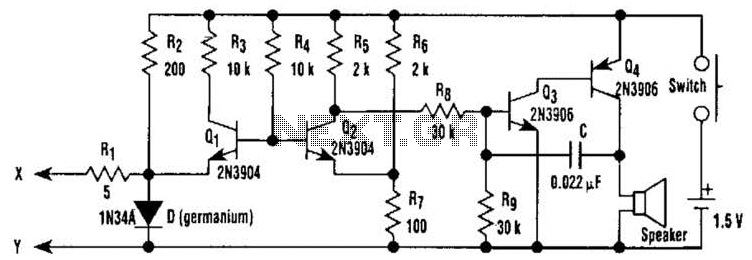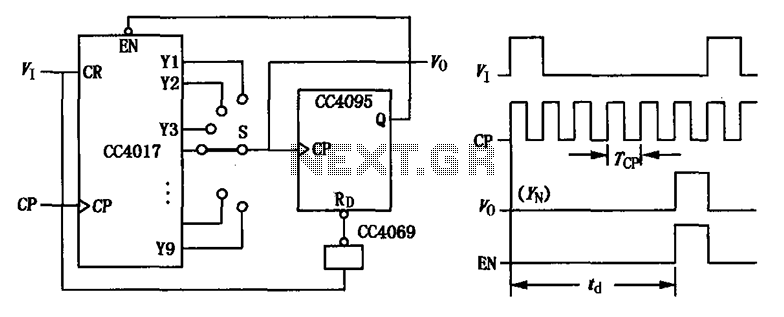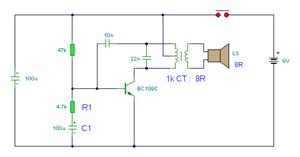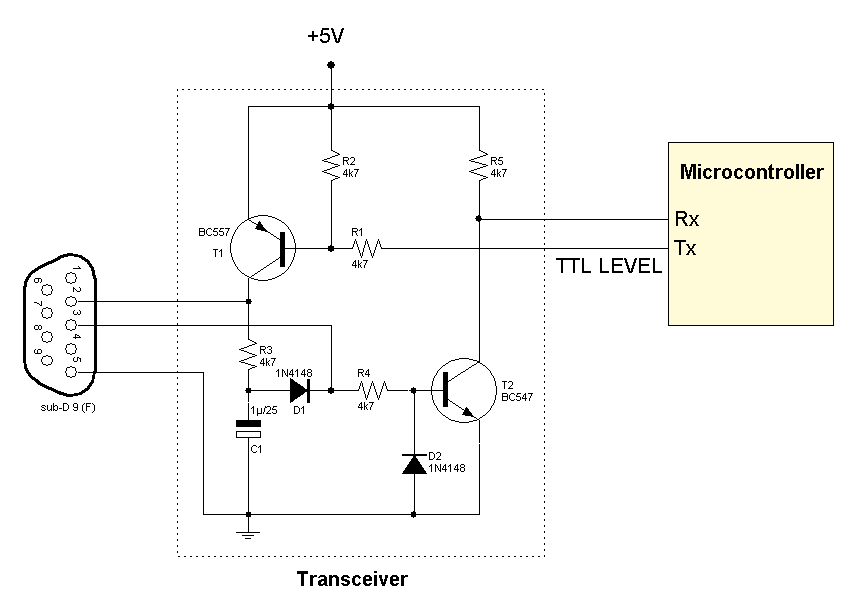
Homemade 20W fluorescent lamp dimmer circuit diagram
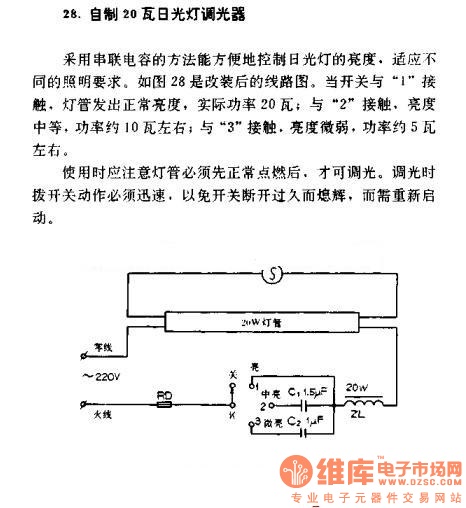
A homemade 20W fluorescent lamp dimmer utilizes a series capacitor connection to effectively control the brightness of fluorescent lamps, allowing for adaptability to various lighting requirements. In the modified circuit diagram (Figure 28), when the switch is set to position 1, the lamp operates at normal brightness with an actual power consumption of 20W. When the switch is set to position 2, the lamp achieves a brighter output.
The circuit design for the homemade fluorescent lamp dimmer includes a basic arrangement of components that facilitate the adjustment of light intensity. The primary component is a capacitor, which is connected in series with the fluorescent lamp. This configuration allows for the reduction of current flowing through the lamp, thereby dimming its brightness.
The switch used in the circuit serves a dual purpose. In position 1, it completes the circuit for normal operation, allowing the lamp to receive full power and emit standard brightness. In position 2, the switch alters the circuit's configuration to include the series capacitor, which decreases the voltage across the lamp, resulting in increased brightness.
Additional components may include a resistor for current limiting, ensuring that the fluorescent lamp operates within safe parameters. Proper selection of the capacitor value is crucial, as it directly affects the dimming range and the stability of the lamp operation. The circuit should be designed with safety in mind, incorporating appropriate insulation and ensuring that all components are rated for the expected voltage and current levels.
Overall, this dimmer circuit provides a simple yet effective solution for controlling fluorescent lamp brightness, making it suitable for various applications where adjustable lighting is desired.Homemade 20W fluorescent lamp dimmer Using the method of connecting capacitor in series can easily control the brightness of fluorescent lamps. To adapt to different lighting requirements. Figure 28 is a modified circuit diagram. When the switch connects to the 1, the brightness of the lamp is normal, the actual power is 20w; and connects to 2, bright..
🔗 External reference
The circuit design for the homemade fluorescent lamp dimmer includes a basic arrangement of components that facilitate the adjustment of light intensity. The primary component is a capacitor, which is connected in series with the fluorescent lamp. This configuration allows for the reduction of current flowing through the lamp, thereby dimming its brightness.
The switch used in the circuit serves a dual purpose. In position 1, it completes the circuit for normal operation, allowing the lamp to receive full power and emit standard brightness. In position 2, the switch alters the circuit's configuration to include the series capacitor, which decreases the voltage across the lamp, resulting in increased brightness.
Additional components may include a resistor for current limiting, ensuring that the fluorescent lamp operates within safe parameters. Proper selection of the capacitor value is crucial, as it directly affects the dimming range and the stability of the lamp operation. The circuit should be designed with safety in mind, incorporating appropriate insulation and ensuring that all components are rated for the expected voltage and current levels.
Overall, this dimmer circuit provides a simple yet effective solution for controlling fluorescent lamp brightness, making it suitable for various applications where adjustable lighting is desired.Homemade 20W fluorescent lamp dimmer Using the method of connecting capacitor in series can easily control the brightness of fluorescent lamps. To adapt to different lighting requirements. Figure 28 is a modified circuit diagram. When the switch connects to the 1, the brightness of the lamp is normal, the actual power is 20w; and connects to 2, bright..
🔗 External reference

